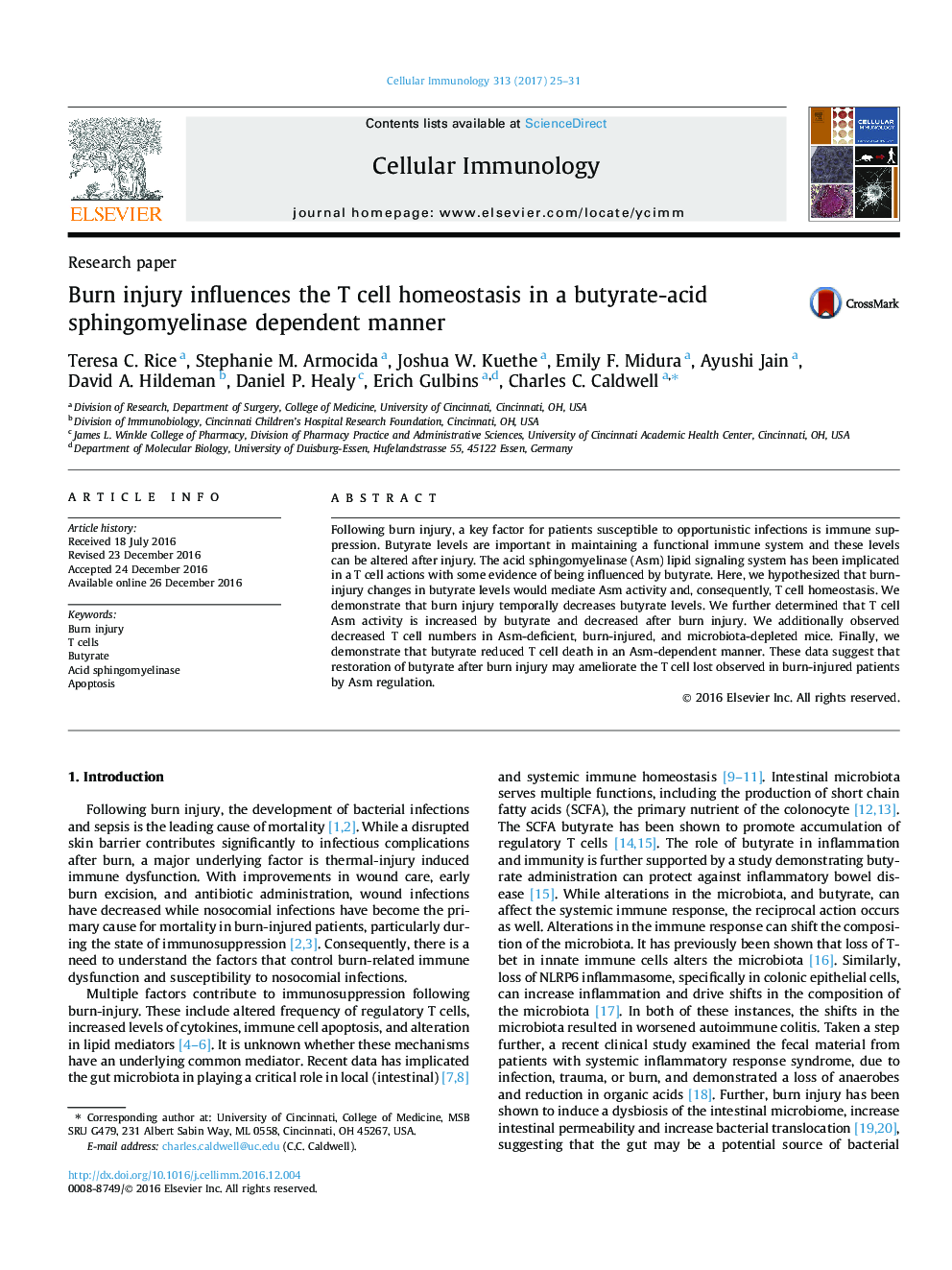| Article ID | Journal | Published Year | Pages | File Type |
|---|---|---|---|---|
| 5530761 | Cellular Immunology | 2017 | 7 Pages |
â¢Burn injury decreases butyrate levels.â¢Butyrate regulates acid sphingomyelinase (Asm) activity.â¢Burn injury reduces Asm activity.â¢Burn-injury results in decreased T cell numbers.â¢Butyrate protects against T cell apoptosis in an Asm-dependent manner.
Following burn injury, a key factor for patients susceptible to opportunistic infections is immune suppression. Butyrate levels are important in maintaining a functional immune system and these levels can be altered after injury. The acid sphingomyelinase (Asm) lipid signaling system has been implicated in a T cell actions with some evidence of being influenced by butyrate. Here, we hypothesized that burn-injury changes in butyrate levels would mediate Asm activity and, consequently, T cell homeostasis. We demonstrate that burn injury temporally decreases butyrate levels. We further determined that T cell Asm activity is increased by butyrate and decreased after burn injury. We additionally observed decreased T cell numbers in Asm-deficient, burn-injured, and microbiota-depleted mice. Finally, we demonstrate that butyrate reduced T cell death in an Asm-dependent manner. These data suggest that restoration of butyrate after burn injury may ameliorate the T cell lost observed in burn-injured patients by Asm regulation.
